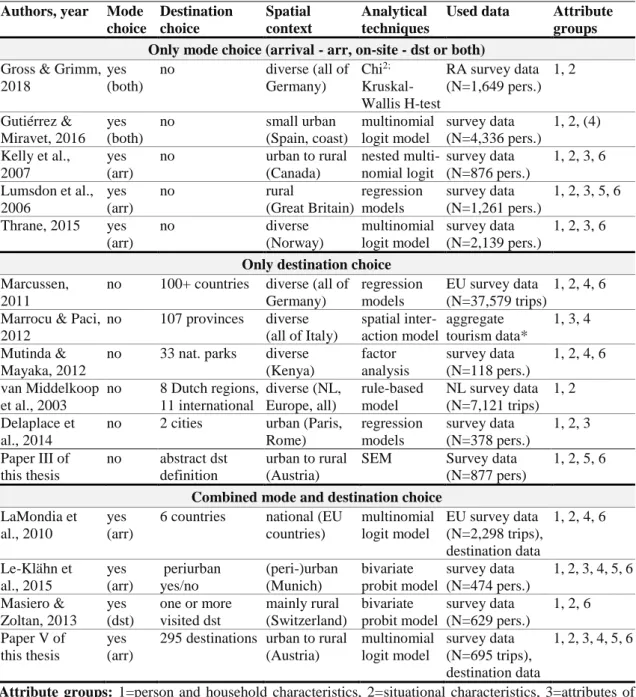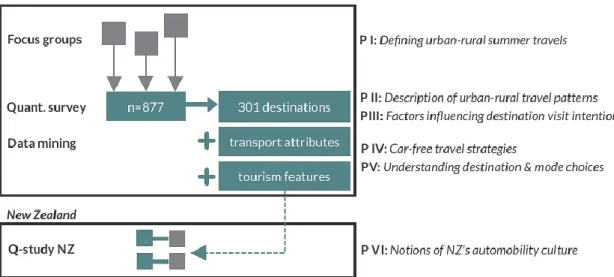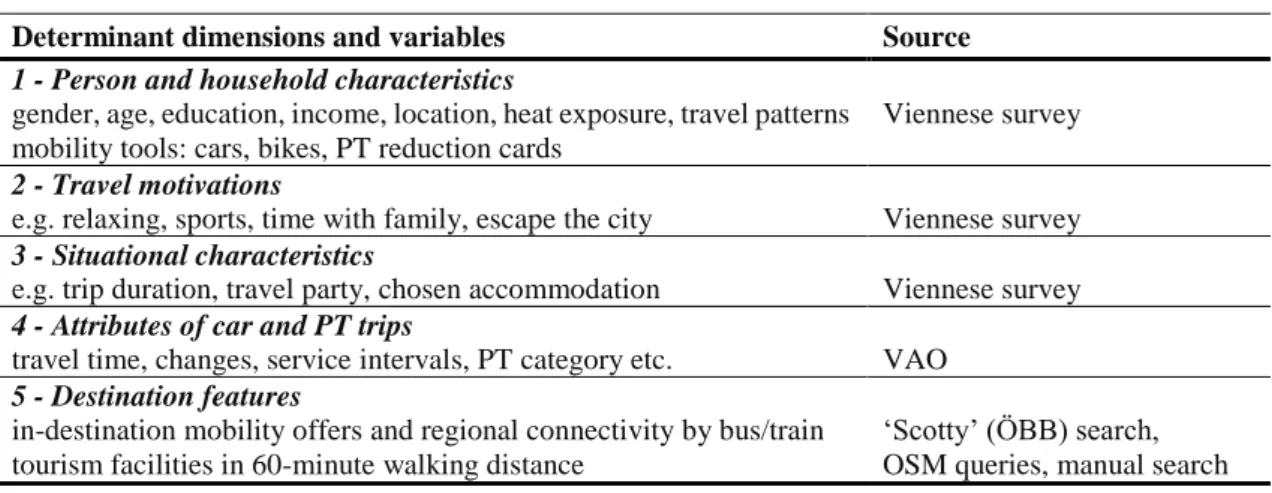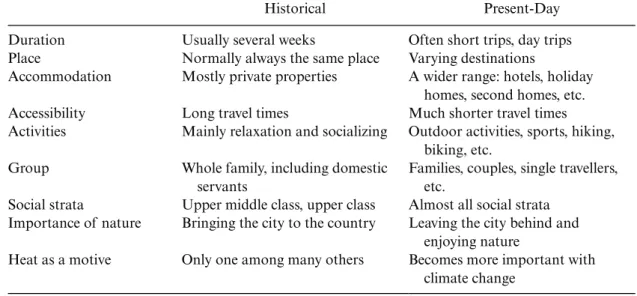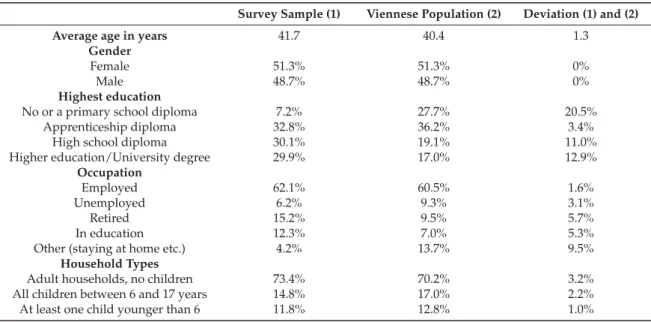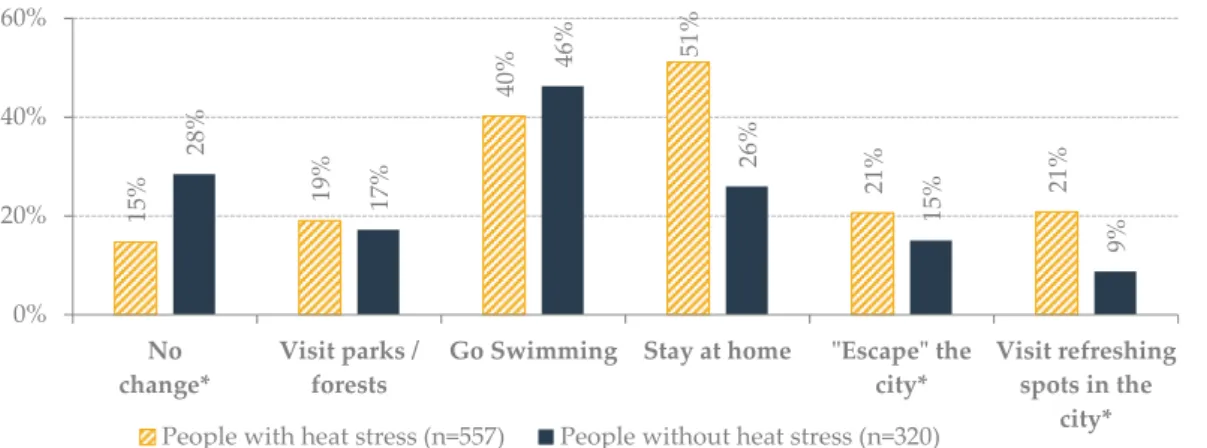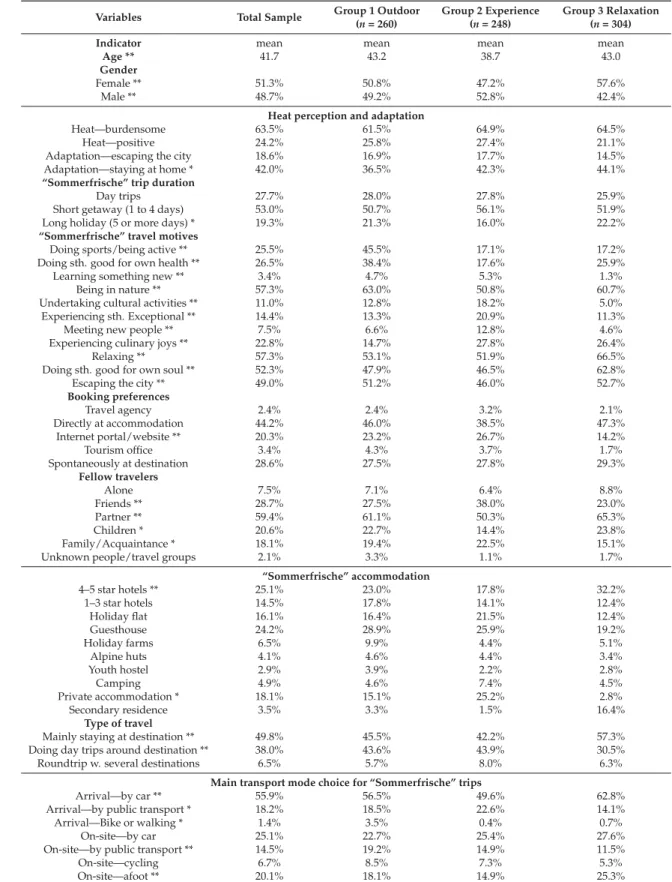On the basis of Leiper's (1979) model of tourism and the results of all six articles, a conceptual model of the system of tourist mobility and the factors influencing it is developed. At the same time, I would like to thank all the members of the REFRESH project team, which was the starting point of this thesis.
RESEARCH SUMMARY
Introducing the research project
- Defining the problem – tourism behaviour changes in the context of climate change
- Research questions and connections between papers
Climate change is a major global problem and one of the major policy challenges of most developed countries (Hall et al., 2015). Such mitigation measures are particularly relevant in light of the role of the tourism industry as a driver of climate change (Scott et al., 2012; Lenzen et al., 2018; UNWTO & ITF, 2019).
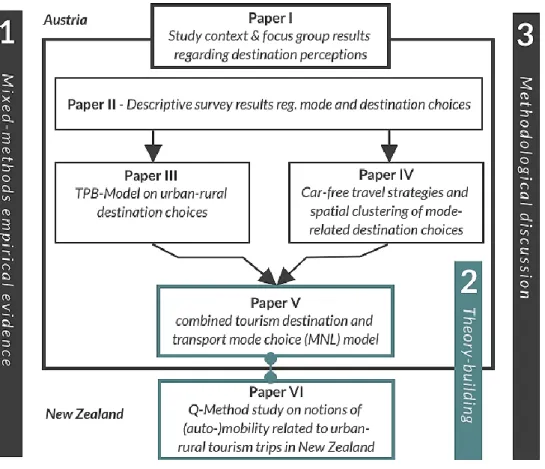
Delineating the research context
- Urban-rural tourism mobility towards nature-based destinations
- Characteristics of the 'rural' and motivations for urban-rural tourism trips
- Mobility aspects of urban-rural tourism movements
This is caused by the density and limited availability of urban space that limit car ownership (see e.g. Buehler et al., 2017). Many attractions are not necessarily located along existing public transport routes, which typically only connect major regional centers or cities (Smith et al., 2019).
Describing the conceptual Foundations
- Relevant terms and definitions
- Characteristics of destination and transport mode choices in a tourism context
- Representation of destination and mode choices in selected theoretical approaches
- Factors influencing tourism decisions and their relevance for behavioural change
15 at the same time support the cultural and societal integrity of the local communities within the destinations (Hall et al., 2015). A field that has emerged at the intersection of transport and tourism is the study of tourism mobilities based on the mobility paradigm (see Hannam et al., 2014).
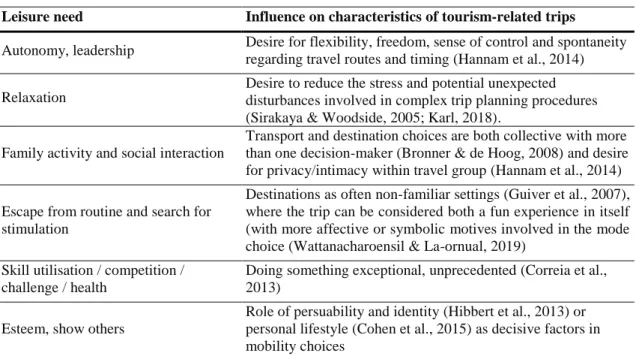
Outlining the research concept
- The philosophical underpinnings of this thesis
- Overview of the chosen case studies and the research framework
- Materials & methods
- Research ethics
Kuhn and Hawkins (1962) define a research paradigm as "a set of common beliefs and agreements shared by scientists about how problems should be understood and addressed". Mobility choices as part of tourism systems are shaped by mutually influencing subsystems (stakeholders, laws, tourist flows, infrastructures) that are embedded in larger environmental processes (Babbie, 2008).

Summarizing the paper contributions
- Overview of papers and research questions
- Paper I: Describing ‘Sommerfrische’ travels in Austria
- Paper II: Description of urban-rural travel patterns and segments
- Paper III: Factors influencing ‘Sommerfrische’ visit intensions based on the TPB
- Paper IV: Car-free travel strategies and their spatial clustering
- Paper V: Combined destination and transport mode choice model
- Paper VI: Notions of automobility cultures among domestic travellers in NZ
Explores the narratives of the tourism-related transport mode choices of NZ urban dwellers. Presents a conceptualization of relationships between mode choice dimensions Summary of findings and relevance to research questions.

Discussing findings and implications
- Conceptual model of urban-rural tourism mobility choices
- Factors influencing destination and transport mode choices (RQ1 & RQ2)
- Evidence for behavioural change in response to climate change (RQ3)
- Contributions of the methodological approaches to the theoretical findings (RQ4)
- Practical implications of these findings
Surprisingly, the number of changes required did not negatively affect public transport choice (as the results of Gutiérrez et al., 2019 indicated). Travel time and the type of public transport (train vs bus) were influential factors, while other studies also emphasize the importance of necessary transfers and travel costs (Gutiérrez et al., 2019).
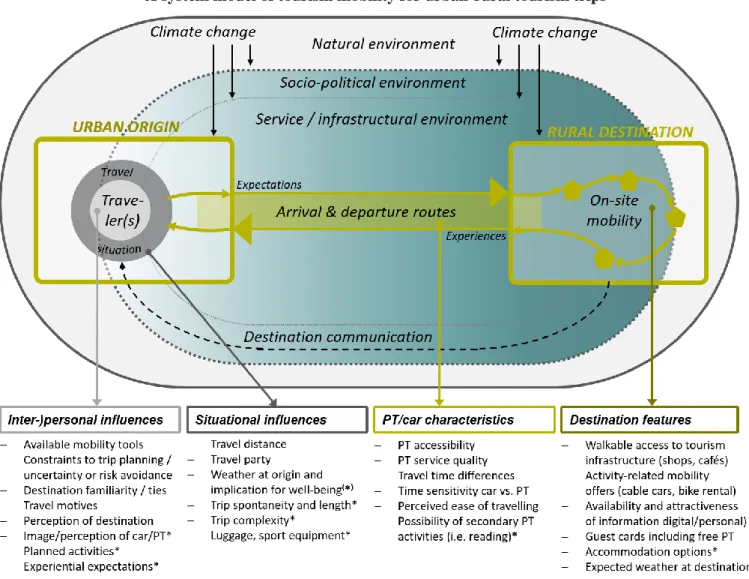
Recapping contributions & ways forward
- Summary of results and contributions
- Limitations, further research and concluding remarks
This thesis began with the aim of advancing the understanding of relevant factors influencing destination and transport mode choices in the context of urban-rural tourism trips. In light of these differences, this thesis contributes to a discussion about the advantages and limitations of different qualitative and quantitative research methods in the tourism context. It cannot be used to make a statement about changes over time, which would be particularly interesting in the context of behavioral adaptations to climate change.
In particular, the issue of luggage transportation seems pertinent (and most likely inhibiting) in the context of tourism travel by PT (see Dickinson & Robbins, 2008; Bursa & . Mailer, 2018). Traveler Behavior and Value Analysis in the Context of Vacation Destination and Travel Mode Choices. The effects of the planned high-speed rail system on travel times and spatial development in the European Alps.
Revealing spatial and temporal patterns of outdoor recreation in the European Alps and their surroundings. Relationship between tourism demand in the Swiss Alps and warm summer air temperatures associated with climate change.
PUBLICATIONS
This chapter focuses on the historical and recent use of Sommerfrische as a way of adapting to hot summers in large European cities under conditions of climate change and the respective associations of the term Sommerfrische. The second section explains the method of focus group discussions and the most relevant findings from these sessions. The concept and perspectives of summer freshness were defined and analyzed on the basis of the existing literature, and the impact of climate and climate change on travel behavior in the Alps during summer was also analyzed.
The First World War and the inflation of the 1920s brought an abrupt end to the classic Sommerfrische phenomenon. Shifts in vegetation belts, changes in species composition and diversity, and retreating glaciers will change the Alpine landscape. They help to better understand the perception and associations of the term Sommerfrische.
The results of the literature review and analysis together with the focus group discussion allow conclusions to be drawn regarding the two main objectives mentioned in the introduction. Both the literature review and the results of the focus group discussions indicate future potential for a Sommerfrische revival.
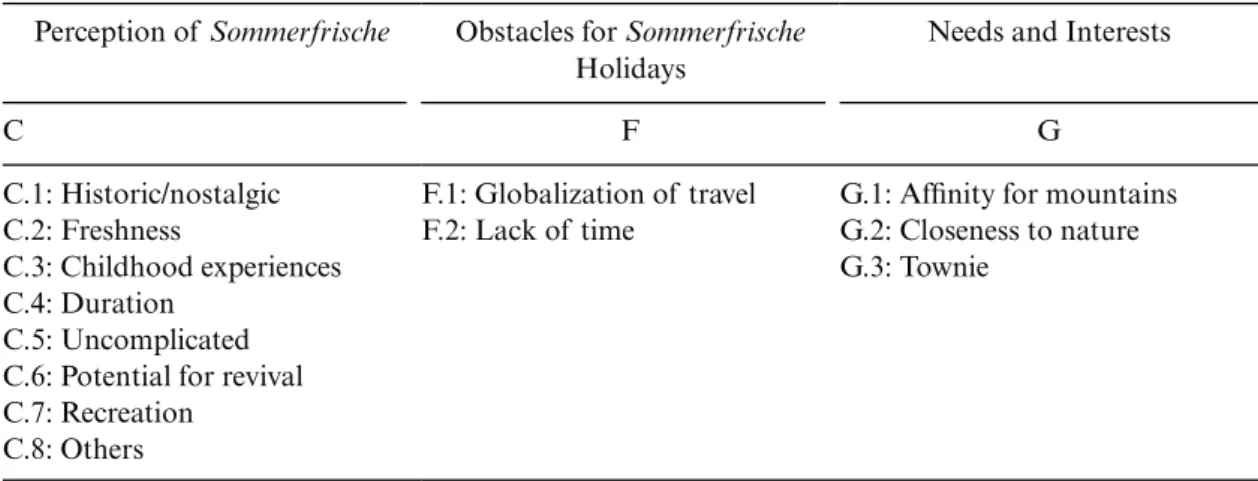
Especially in alpine areas, climate change has many effects on the tourism sector, mainly due to the current rise in temperature, which is expected to increase further in the future. In order to gain insight into different aspects of the research questions – such as the impact of heat on tourist choices as well as the different potential target groups for “Sommerfrische” destinations – the research was composed of different thematic sections. Second, the respondents were classified into four different groups based on the PCA factor score.
An important part of the research concerned the perception of heat stress among urban residents, as well as their heat adaptation strategies. In the context of desired improvements in the overall delivery quality, this study also evaluated respondents' interest in specific measures for climate-friendly transport (see Figure 7). The larger the metropolitan areas are, the stronger the impact of heat waves can influence the behavior of citizens in the future.
Exploring visitor perceptions of the influence of climate change on tourism at Acadia National Park, Maine. Sommerfrische' in times of climate change: a qualitative analysis of historical and recent perceptions of the term.
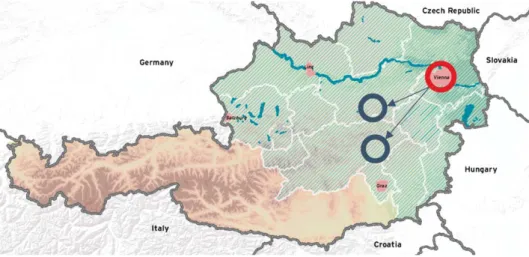
DCEs focus on the attributes of the chosen object (price, quality of service, etc.); their strength lies in capturing the impact of these attributes on choice. After adding each new construct, we assessed the impact on explained variance of behavioral intention as well as the impact on overall model fit. Table 6 provides the results of this evaluation in order to justify the inclusion of these constructs in the final scope. The TPB model. The results show that among the essential elements of the TPB, subjective norms combined with social norms (covered in H1b and H2a), have the strongest influence on behavioral intention (ϐ= 0.31, p < 0.01).
The indication of previous visits to SRDs (captured in H2d) has a strong effect on intention to revisit in the future, in addition to the effect of the core TPB constructs and despite covariance with other constructs (ϐ = 0.15, p < 0.01). The model results of the exploratory analysis show that the general intention to visit SRD in the future has the greatest influence on the change of intention due to heat (ϐ= 0.40, p < 0.01). In addition to the hypothesized effects, the model tested the influence of the constructs of the extended TPB model on warmth-related intention change.
Regarding the effect of heat, the results show that most people are not yet aware of the refreshing character of SRD. The effectiveness of the theory of planned behaviour: A meta-analytic review.British Journal of Social Psychology https://.
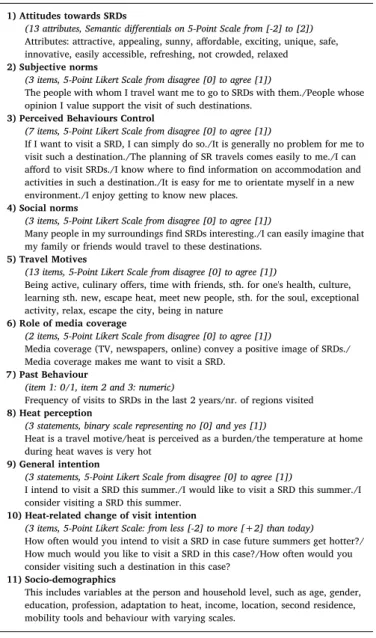
As mentioned before, the general tourism behaviour, preferences and car-free travel strategies of car-free households are largely unknown to date. Lagrell et al., 2018) analyzed accessibility strategies used by (voluntarily) car-free households to compensate for car-freedom in their daily lives using in-depth interviews. First, it shows that car-free households face a variety of constraints, limiting their ability to meet personal needs in a timely and flexible manner (Lagrell et al., 2018).
One adaptation strategy is to specifically visit destinations with mobility and tourism infrastructure that meet the needs of car-free households. For the analysis of sociodemographic characteristics of car-free households (hypothesis 1), a t-test was performed to analyze the significance of group differences for all relevant variables. This shows that car-free households do feel constrained in their travel choices by a destination's accessibility without a car.
This article examined different travel options of car-free households and travelers for trips to rural tourism destinations in Austria. This analysis reveals a number of findings regarding different adaptive strategies for car-free households or travelers in the tourism context.
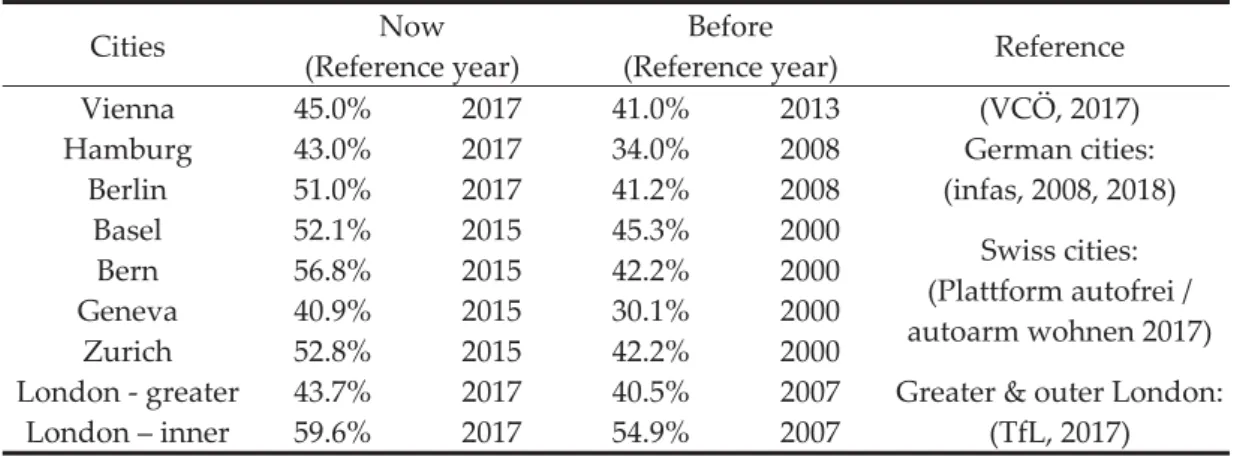
For the choice of transport mode, the influence factors of personal, household and personal travel/car travel characteristics are often investigated (e.g. Gross & Grimm, 2018, p. 405; Hall et al., 2017; Le-Klähn et al., 2015; Masiero & Zoltan, 2013) tried to understand the relationship between the two choices in the context of tourism. According to previous work, travel group, group size, and familiarity with the destination are influential factors in leisure choice (Kelly et al., 2007; Le-Klähn et al., 2015).
According to previous studies, destination choices are mainly influenced by geographical features and available tourist infrastructure or attractions (Marrocu & Paci, 2012), while mode choice is influenced by available transport infrastructure (Le-Klähn et al., 2015). This confirms the findings of previous studies on tourist segments and their demand profile in this research context (Juschten et al., 2019). First, this study reveals that trip characteristics have more influence on these tourism choices than sociodemographic characteristics (see also Kelly et al., 2007; Le-Klähn et al., 2015).
Second, while previous researchers treated tourism destination and transport mode choices separately (LaMondia et al., 2010; Le-Klähn et al., 2015), we show that (i) both are intertwined rather than isolated choices, and (ii ) destination and transport functions both affect the combined choice. Focus can be placed on increasing the intrinsic enjoyment of traveling (as with driving or cycling tourism) through target group-specific mobility offers (Guiver et al., 2007).
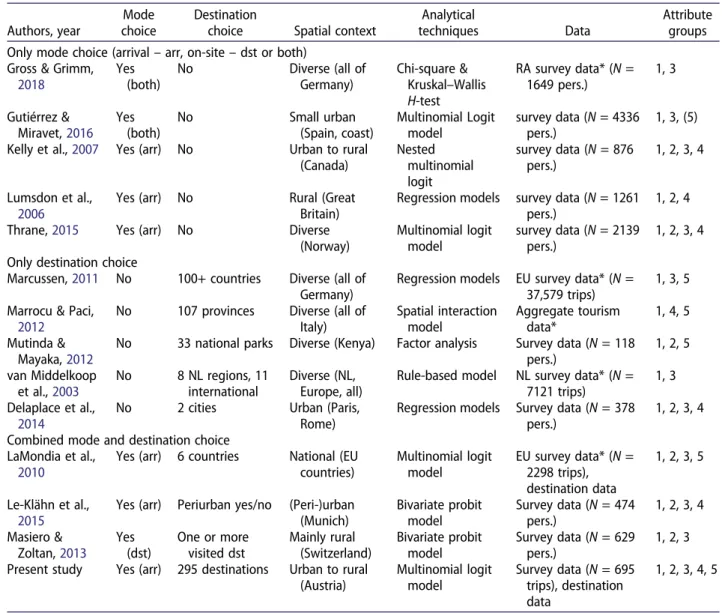
All interviews were conducted during New Zealand's high domestic travel season, between December 2019 and January 2020. Following the completion of sorting, a semi-structured post-sorting interview (20 minutes on average) was conducted. We considered the eigenvalue of all the factors (seven factors had an eigenvalue above one);
We believe that this is a more realistic way of looking at the interconnectedness of the various spheres that shape the current practices of social tourism mobility. The analysis of all four identified factors and the qualitative study of post-sort interviews revealed several factors influencing mode choice in the tourism context. Students of mobility emphasize nuance, complexity and fluidity [80, 81], while social practices approaches focus on the above-mentioned interconnectedness of different elements of social life [82].
Furthermore, given that all study participants lived in Christchurch, the difference in views. Physical activities and sports are a very important part of my leisure travel in New Zealand.
![Table 1. Dimensions and influential factors for tourism travel choices partly based on [19].](https://thumb-eu.123doks.com/thumbv2/pubdocorg/274348.42885/178.892.138.754.420.636/table-dimensions-influential-factors-tourism-travel-choices-partly.webp)
